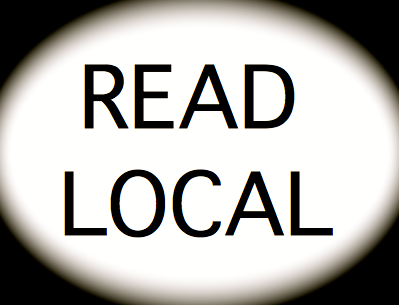We are living in the Locavore Age. If your college town is like my own Athens, Ohio, then the menus at your local brewpub tout the family farm that yielded your pulled pork, the CSA that produced your delicately sautéed kale, and the c.v. of your in-house brew master, who chooses only the finest local ingredients to fuel your afternoon grading buzz. (Our brew master was in my poetry class, a fact that I brag about whenever I sample his fine porter.) The farmers’ market is a weekend destination far more popular than any church, and behind your typical sociology instructor or communications professor, you’re likely to discover a do-it-yourself fermenter, making komboucha in her kitchen, or an avid forager eager to show you the mushroom crop he found while hiking and is now adding to your pasta.
On Facebook, we circulate petitions to protect the local water supply from fracking; we Tweet about protests outside city hall; we try to Kickstart the town filmmaker’s latest documentary. But in these same college towns, the academic institutions have long held ambivalent attitudes toward what we might call ‘localism.’ Academic departments have a long-standing suspicion of drawing from too close to the source, whether it involves promoting adjunct faculty to tenure-track positions, hiring their own PhD students, or considering the ‘legitimacy’ of spousal hires. The same professors who shop at the farmers’ market on Saturday go to a faculty meeting on Monday and argue that hiring from afar is inevitably better, that choosing someone outside the university community allows for someone to be assessed purely on ‘merit’.
But as we shift toward supporting the local in our everyday lives, it’s time to realign our academic values with our domestic values. This would not be the first time that we re-evaluated what constitutes ‘merit’: in hiring, in what we teach, in what we have our students read. In fact, the movement to increase diversity in academia has largely been about recognizing merit in people and places that, historically, we ignored. At one time, in literature and creative writing classes like mine, the ‘best’ meant a list likely to be constituted entirely of white, mostly male authors. These were the best, and everyone knew it.
Once we opened up the canon, we realized that literary merit could be found in new places, in investigating and exploreing different voices: women writers, queer writers, writers of color. We realized that by introducing our students to reading from new places we were enriching their lives—and finding some remarkable books along the way. This was more than just diversity for diversity’s sake—rather, we were teaching our students to find value in places that had been traditionally overlooked.
Finding value in overlooked places. Teaching our students to ‘read the world’ on many levels. Aren’t these things part of our jobs?
In other words, what if we assigned books the way that many of us buy our food—from the local outward. What would a locally-sourced book list look like?
Taking inspiration from the local food movement, it’s useful to think in concentric circles, with the most local (able to be defined in various ways) at the center, moving outward into other regionally-based sources, then nationally, then globally. The list below is not meant to establish a quota or checklist, but a way of looking at building a reading list through a different lens.
- Work by a writer from your own university—obviously the most directly ‘local’ in an academic setting. Traditional academia might see choosing a colleague’s work as nepotistic or self-serving. A Locavore approach celebrates the creativity and productivity of one’s own community, and encourages students to see professors as more than just a classroom presence.
- Work by a local writer not affiliated with the university. This can help students challenge the town/gown barrier, as well as see that creativity and scholarship do not only exist in connection to the university
- Work published by a university press, either your own university’s, or elsewhere. University presses are the publishers most ‘local’ to the university ecosystem, existing primarily, though certainly not exclusively, to publish and serve academic authors and classrooms. In addition, most university presses devote a portion of their list to work connected to their region—which can lead to important discussions of place and context.
- Work published by a small/independent press. Like university presses, and sometimes even more so, small presses tend to be rooted in their communities. For creative writing classrooms, highlighting work by small presses is especially important, since increasingly this is where future opportunities will be found for many students who aspire to writing careers.
Of course, there are many ways to define ‘local’ writing, and this list is intended just to offer some possible ways in to re-imagining a reading list based on honoring the local—your own, or someone else’s.
A teacher’s reading list is a very particular thing—an extension of our intellectual priorities, our comforts, our gaze. When we turn that gaze locally, we see different things. And it need not be exclusive—not at all. But just as it now seems strange to construct a reading list exclusively of white men, I hope that one day it will seem just as odd to put together an entire list of readings drawn only from big New York publishers. As if every time we wanted a tomato, we had someone drive it to us from California.
So, what would your locally-sourced reading list look like?


